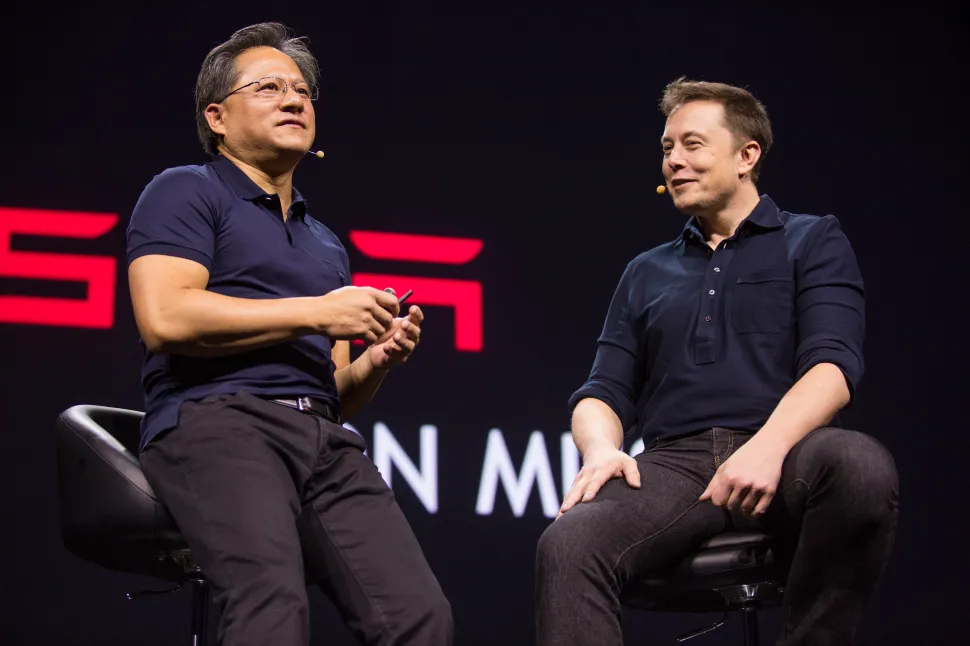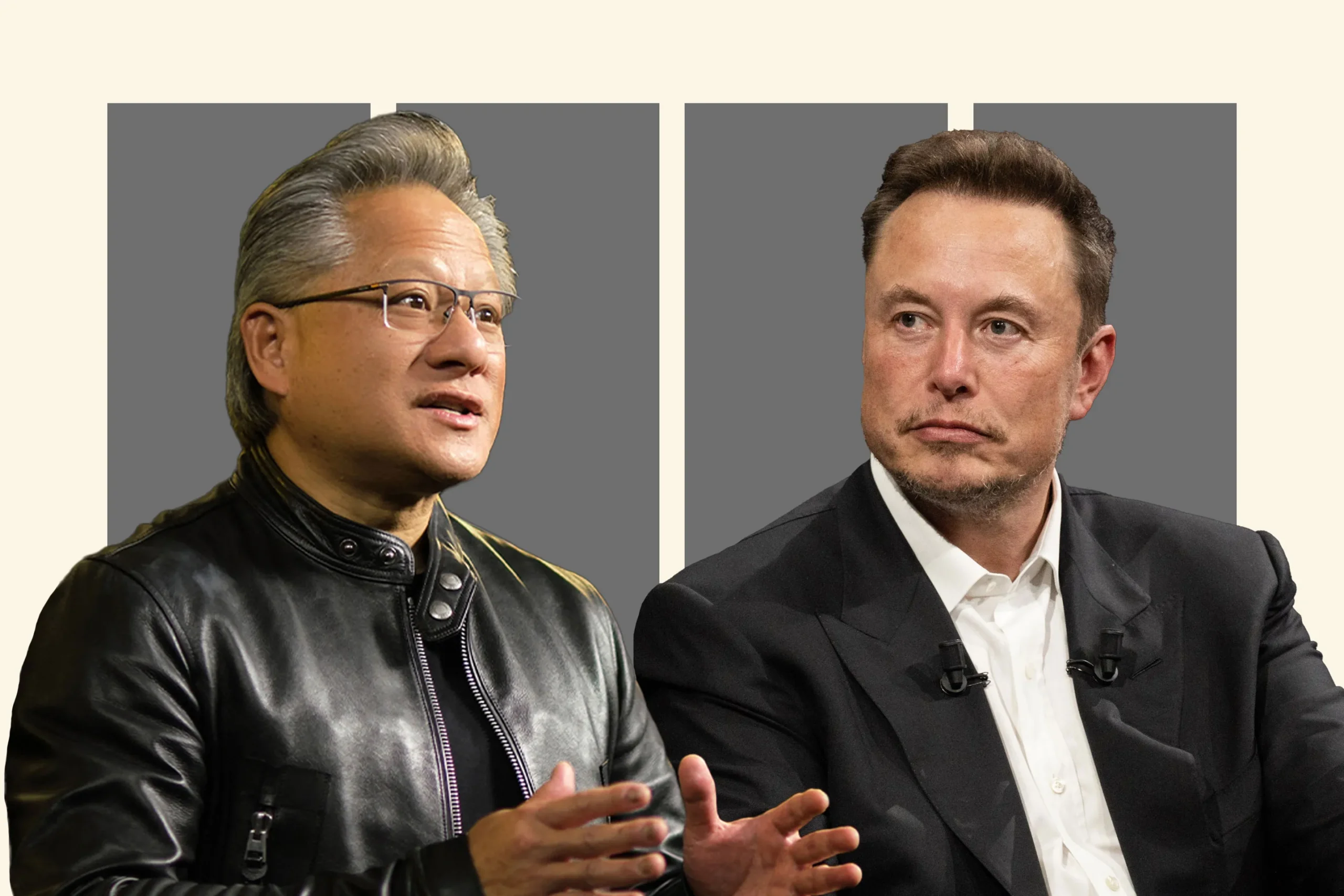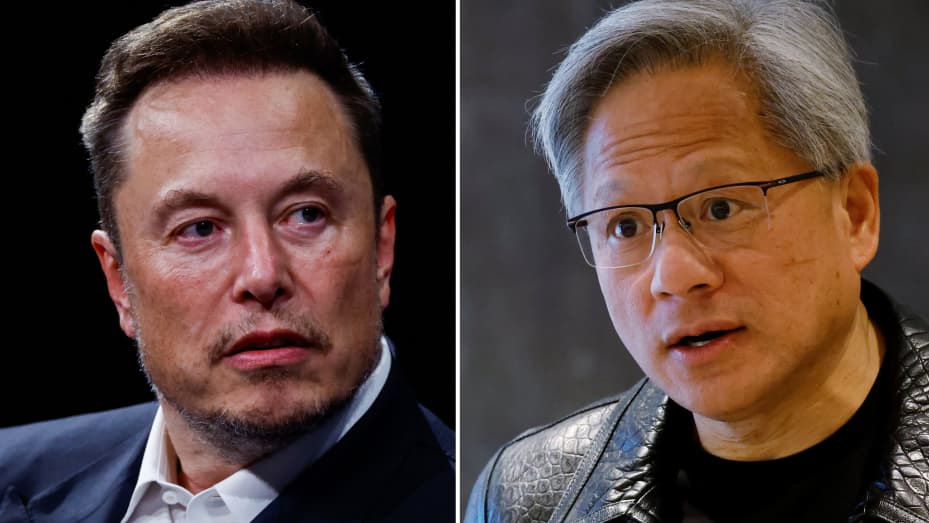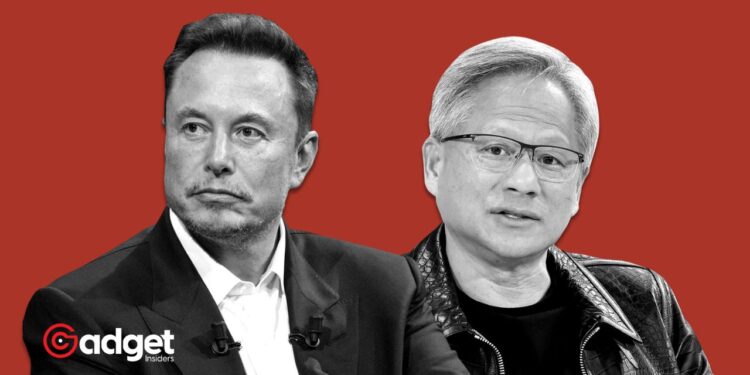In the dynamic realm of technology, where innovation and foresight are the keys to staying ahead, few have managed to predict and shape the future as effectively as Nvidia under the leadership of Jensen Huang. This sentiment is echoed by none other than tech visionary Elon Musk, who, in a rare moment of public endorsement, highlighted Nvidia’s pivotal role in the AI revolution during a FaceTime conversation at the Abundance360 Summit in Rancho Palos Verdes, California.
Elon Musk and Jensen Huang: A Mutual Recognition of AI’s Potential
It’s not every day that Elon Musk, a figure synonymous with groundbreaking advancements in electric vehicles, space exploration, and artificial intelligence, pauses to commend the achievements of fellow trailblazers in the tech industry.
Yet, Musk’s acknowledgment of Huang and Nvidia’s foresight comes from a place of genuine admiration for their decades-long commitment to positioning the chip manufacturing company at the cutting edge of AI technology.

“You have to give credit to Jensen and the Nvidia team for kind of seeing this coming,”
Musk remarked, shedding light on the chip-making giant’s unparalleled contributions to AI hardware development.
The Driving Force Behind AI’s Leap
At the core of this technological leap is Nvidia’s sophisticated chips, which Musk credits for the substantial increase in AI computing power observed in recent years.
These chips are not just components; they are the engines powering the rapid acceleration of artificial intelligence, making possible advancements that were once the stuff of science fiction.
Musk’s bold prediction of a tenfold increase in AI computational power every six months underscores a future where AI’s capabilities are limited only by our ability to imagine them.

Challenges on the Horizon: The Quest for Power and Efficiency
However, with great power comes great responsibility, and in the case of AI, great energy requirements. The surge in demand for AI chips has been matched by an equally significant challenge: securing enough electricity to sustain the growth of this burgeoning field.
The scarcity of AI chips, a hurdle that momentarily capped AI‘s potential growth, has now given way to a new bottleneck – the availability of electricity to run the ever-expanding data centers that house these chips.
“Getting the power from a utility, something like 300 kilovolts, down to below one volt is a massive step down”
said Musk, joking that the industry currently needs “transformers for transformers.”
Elon Musk Touts Nvidia Dominance and Predicts a Giant Leap in AI Power https://t.co/sjwX9sAHg1 pic.twitter.com/oyfNNhI8y1
— Jean Caragher (@JeanCaragher) March 20, 2024
A New Era for Artificial Intelligence
As we stand on the brink of what could be the next giant leap in artificial intelligence, it’s clear that Nvidia, with its best-in-class AI hardware and visionaries like Elon Musk and Sam Altman, are not just participants in this evolution but architects of a new digital era.
Their efforts to overcome the technological and ecological challenges of AI advancement are paving the way for a future where artificial general intelligence (AGI) could become a reality, transforming our world in ways we are only beginning to comprehend.

In this rapidly evolving landscape, one thing remains certain: the chip-making giant’s dominance in AI hardware, heralded by Elon Musk’s commendation, is not just a testament to the company’s past achievements but a beacon guiding us toward an electrifying future of infinite possibilities.










